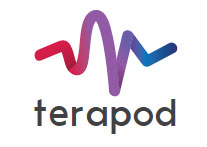ULTRAWAVE is being financed through the call ICT-09-2017 “Networking research beyond 5G” of EU H2020 program. All projects funded in this call are joining their forces to share information among themselves and collaborating in the dissemination of their results. These are the other projects of the call:
| DREAM – D-band Radio solution Enabling up to 100 Gbps reconfigurable Approach for Meshed beyond 5G networks | |
 |
Through the exploitation of the radio spectrum in D-band (130-174.4 GHz) with beam steering functionality, DREAM will enable wireless links with data rates exceeding current V-band and E-band wireless backhaul solutions by at least a factor of ten and thus, it will bring wireless systems to the speed of optical systems. The DREAM project vision and objectives rely on a power efficient and silicon based BiCMOS transceiver analog front end, operating in D-band and enabling cost efficient deployment of meshed networks with seamless fiber performance. A beam steering integrated antenna array using an intelligent low-cost packaging technology prototype will be developed for the implementation of the beyond 5G network proof of concept in a realistic environment. |
| EPIC – Enabling Practical Wireless Tb/s Communications with Next Generation Channel Coding | |
 |
EPIC aims to develop a new generation of Forward-Error-Correction (FEC) codes in a manner that will serve as a fundamental enabler of practicable beyond 5G wireless Tbps solutions. The project also aims to develop and utilize a disruptive FEC design allowing to advance state-of-the-art FEC schemes and to obtain the principal channel codes for beyond-5G (B5G) use-cases. The design framework developed within the project will offer new ways to conduct research and development and has the potential to affect the development of all future B5G communication systems. |
| TERAPOD – Terahertz based Ultra High Bandwidth Wireless Access Networks | |
 |
The aim of TERAPOD is to investigate and demonstrate the feasability of ultra high bandwidth wireless access networks operating in the Terahertz band. The project will focus on end to end demonstration of the THz wireless link within a Data Centre Proof of Concept deployment, while also investigating other use cases applicable to beyond 5G such as wireless personal area networks, wireless local area networks and high bandwidth broadcasting. The project seeks to bring THz communication a leap closer to industry uptake through leveraging recent advances in THz components, a thorough measurement and characterization study of components and devices, coupled with specification and validation of higher layer communication protocol specification. |
| TERRANOVA – Terabit/s Wireless Connectivity by TeraHertz innovative technologies to deliver Optical Network Quality of Experience in Systems beyond 5G | |
 |
TERRANOVA envisions to extend the fibre-optic systems’ Quality of Experience to wireless links by exploiting frequencies above 275 GHz. This means reliable connectivity at extremely high data rates in the Tbit/s regime and almost ‘zero-latency’ for networks beyond 5G. The consortium will employ breakthrough technology concepts, namely: the design of baseband signal processing for the complete optical and wireless link and the development of THz wireless frontends and their integration with photonic components. A network information theory framework, caching techniques, channel and interference models, all tailored to the particularities of the THz regime and extremely large bandwidths will achieve the successful co-design of components and network solutions. |
| ULTRAWAVE – Ultra capacity wireless layer beyond 100 GHz based on millimeter wave Traveling Wave Tubes | |
| Ultra capacity wireless layer beyond 100 GHz based on millimeter wave Traveling Wave Tubes The ULTRAWAVE project is aimed at developing a high capacity backhaul that enables 5G cell densification by exploiting bands beyond 100 GHz. New travelling wave tubes delivering high power will allow the creation of an ultra capacity layer providing more than 100 Gbps per kilometer square in point-to-multi-point at D-band (141-174.8 GHz) fed by novel G-band (300 GHz) point-to-point high capacity links. The ULTRAWAVE system is empowered by the convergence of three main technologies: vacuum electronics, solid-state electronics and photonics. This ULTRAWAVE layer will enable backhaul of hundreds of small and pico cells, no matter the density, opening scenarios for new network paradigms aiming at a full 5G implementation. |
|
| WORTECS – Wireless Optical/Radio TErabit CommunicationS | |
 |
WORTECS will explore Tbps capability of the spectrum above 90 GHz, combining radio and optical wireless technologies. The primary challenge of WORTECS is to propose scientific and technology advances for novel use of the spectrum, de-risking technological building blocks at frequencies above 90 GHz up to THz communications backed by innovative usage scenarios, for instance, virtual reality. It will also address visible light communications and develop radically new approaches for spectrum efficiency. WORTECS aims to offer: optical wireless communication and radio over 90 GHz Proof of Concept with several Gbps throughput: innovation on antenna, coding and heterogeneous wireless network studies with new architectures and protocols for routing, latency and caching. |
| THOR – TeraHertz end-to-end wireless systems supporting ultra high data Rate applications | |
 |
ThoR was not funded in ICT-09-2017 but the topics are very closely aligned and the cluster has decided to include this exciting project. It is a joint EU-Japan project to provide technical solutions for the data networks beyond 5G (B5G) based on 300 GHz RF wireless links. Data traffic densities of several Tbps/km2 are already predicted for 5G networks. To service a fully mobile and connected society networks B5G must undergo tremendous growth in connectivity, data traffic density and volume as well as the required multi-level ultra-densification. The ThoR project will provide technical solutions for the backhauling and fronthauling of this traffic at the novel spectrum range near 300 GHz, which is able to cover the data rates of 200+ Gbps required for B5G systems.. |